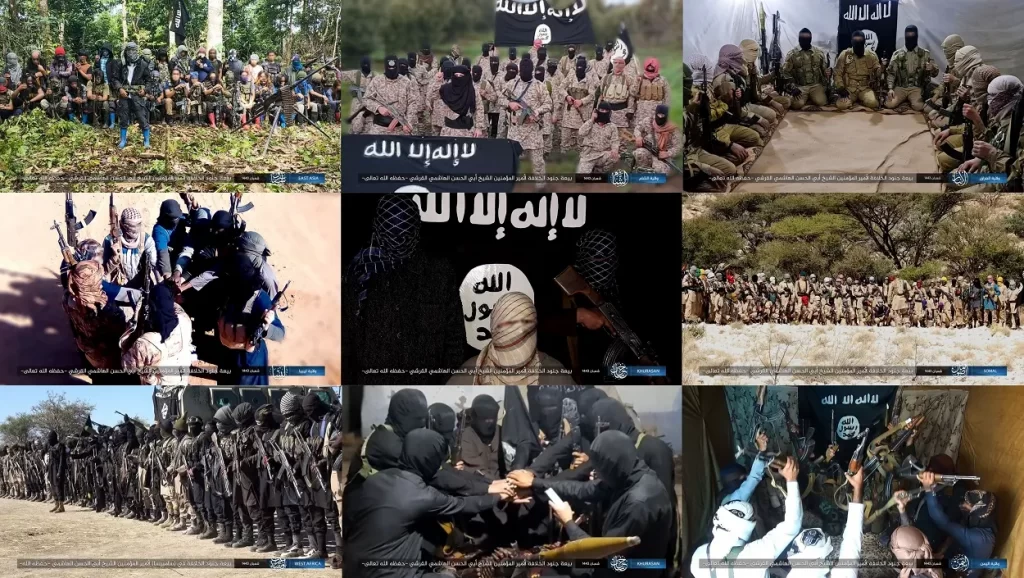
STRATEGIC ASSESSMENT-Washington. President Joseph Biden recently approved a plan to redeploy hundreds of U.S. forces back to Somalia, concerned over the growing threat posed by the al-Qaeda-linked al-Shabaab group. The move will send Special Operations Forces (SOF) back to Somalia with the explicit mission to target al-Shabaab’s leadership. At the same time, efforts are underway to address the many factors driving grievances and support for the group, including dire humanitarian conditions and insecurity. Across the board, from sub-Saharan Africa to South Asia, the U.S. and its allies are reassessing the current state of global terrorism, recalibrating the allocation of resources to deal with the most urgent threats. At a recent meeting of the Global Coalition to Defeat ISIS in Marrakesh, Morocco, that brought together ministers from the 83-member coalition, it was clear that Africa was on the top of the agenda. Islamic State affiliates are active throughout the Sahel and broader West Africa region, with a growing presence in Burkina Faso, Mali, Niger, and Nigeria. Violence has spread to other countries too, including Cameroon, Benin, Ghana, and Togo. In 2021, Africa accounted for nearly half (48%) of all ISIS attacks worldwide. In some ways, the center of gravity for Salafi-jihadists has moved from the Levant to sub-Saharan Africa. This is occurring at a volatile time, with coups in countries like Mali, the withdrawal of some European security forces, and the increased presence of Russian private military contractors like the Wagner Group.
In South Asia, the Islamic State Khorasan (IS-K) has been ramping up attacks against the Taliban, as well as launching attacks on neighboring countries from Afghan soil. IS-K militants fired rockets into both Uzbekistan and Tajikistan in an attempt to destabilize the region. Part of IS-K’s goals in Afghanistan are to embarrass the Taliban and demonstrate that the Taliban are unwilling and unable to provide security for the entire country. Meanwhile, recent assessments from the U.S. Department of Defense suggest that, within the next 12 to 24 months, the Taliban is likely to loosen restrictions on al-Qaeda, thus allowing its members more freedom of movement to train, travel, and potentially “re-establish an external operations capability.” The Taliban also likely sees al-Qaeda as an effective counterweight to IS-K, although heightened tensions between the jihadist groups risk dragging Afghanistan directly back into civil war and further destabilizing the country. The Taliban has proved inadequate at counterinsurgency, taking a heavy-handed approach to combating IS-K that has alienated civilians in areas along the Afghanistan-Pakistan border. For countries in the region, and India and Pakistan in particular, the volatility in Afghanistan creates an unpredictable security environment, with India increasingly concerned about the Taliban’s relationship with Pakistan; at the same time, reports suggest that Islamabad is dissatisfied with the Taliban’s ability to reign in Pakistani groups threatening the government.
Since the death of its previous leader, Abu Ibrahim al-Hashimi al-Qurayshi, the Islamic State has reorganized some of its affiliates, separating out the Islamic State Sahel and Islamic State in Mozambique. Further organizational tweaks may be inevitable, as Islamic State seeks to remain relevant even as it struggles to gain momentum after having lost the last remaining areas of its territorial caliphate in Iraq and Syria in March 2019. Its affiliates in Yemen, Libya, Somalia, and Southeast Asia have all been diminished, yet its brand has continued to resonate with sympathizers, and its media department still seeks to inspire new attacks in Western countries by inciting followers to engage in acts of terrorism. In recent testimony before the Senate Armed Services Committee, the director of the Defense Intelligence Agency (DIA), said that he believes al-Qaeda and IS-K are about 12 months away from being able to reconstitute an external operations planning capability. Others believe it could happen even sooner.
Even as Western countries pivot resources from global counterterrorism to great power competition, there are lingering vulnerabilities, including new conflict zones and power vacuums that will attract jihadist groups. Moreover, there are tens of thousands of individuals still languishing in detention camps throughout Syria, where they live in deplorable conditions and provide ISIS with a grievance-filled and ready-made narrative. Attempted prison breaks, similar to what occurred in Hasakah in January, could serve to help ISIS replenish its ranks. As countries continue to grapple with the socioeconomic fallout of the COVID-19 pandemic, climate-related economic shocks, conflict-driven food insecurity exacerbated by Russia’s invasion of Ukraine, and the displacement of populations owing to ongoing conflicts worldwide, there is any number of burgeoning grievances violent extremist groups may seek to exploit in coming months.
The Global Coalition to Defeat Daesh has discussed capacity building efforts that will complement existing kinetic measures. These complementary lines of effort include border security, information sharing, and defense institution reform. There is also an effort to overhaul cooperation between the Global Coalition and other partners already operating on the ground, including forces from several European militaries and security forces from African nations. At the United Nations—where the Security Council and other bodies have grappled with the evolution of transnational terrorism and developed complex legal, technical, and political frameworks to foster international cooperation and build capacities of member states—there is a critical need to assess lessons learned and impacts to date and ensure that the future of international counterterrorism efforts align with the current and evolving threats on the ground.





